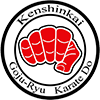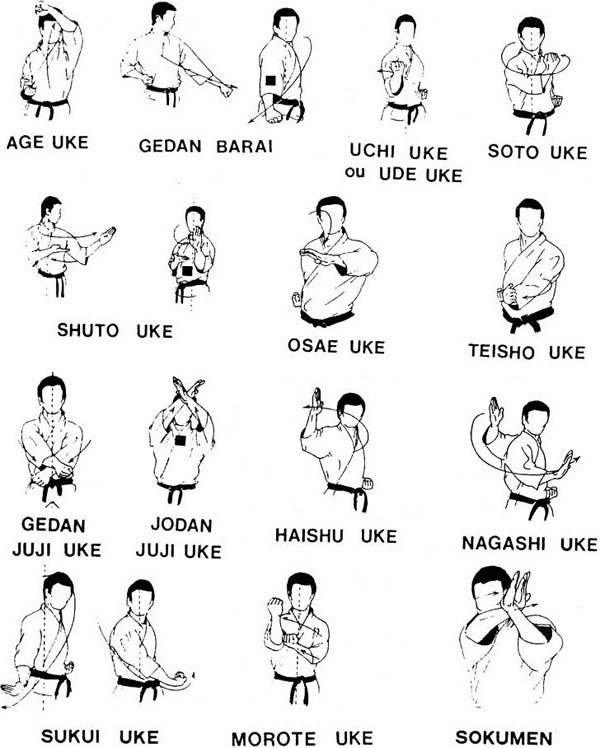

 The ultimate goal of all Karate methods (Martial Arts) is to defeat the enemy without fighting back. This notion is intimately connected with the essence of karate-do and is expressed as a philosophy of karate in the proverb, Karate Ni Sente Nashi (there is no first attack in Karate or Karate only begins with a defensive theme).
The ultimate goal of all Karate methods (Martial Arts) is to defeat the enemy without fighting back. This notion is intimately connected with the essence of karate-do and is expressed as a philosophy of karate in the proverb, Karate Ni Sente Nashi (there is no first attack in Karate or Karate only begins with a defensive theme).
There are always some persons who commit violent act against good citizens; the blocks have been designed to receive and redirect that violent attack. It is imperative to fully understand the practical functionality of the basic karate uke (block). In Karate, the block and the attack are considered to be one. This is due that one must not wait for the attack to reach its full destination but develop the intuition level to identify and intercept the attack before it reaches its full extension of execution.
It is also important to highlight that although blocks have been designed to receive the opponents attack, it can also be used in many other forms of defensive application, like blocking by striking vulnerable areas of the arms and legs as well as other vital soft tissue areas to prevent, incapacitate or control your opponent’s weapons (arms and feet). Ukes (blocks) can also be used to parry, redirect, check or pin an opponent’s attack. In many cases these defensive moves can be also use to manipulate the opponent’s joints and limbs by applying pressure on the opponent’s arms or legs to control or dislocate an assailant’s limb, which may lead to be followed up by a percussive impact technique (Strikes) if the circumstance dictates for the assailant to be incapacitated.
In conclusion, it is important to highlight that the development of blocking skills by a practitioner of Karate-Do is highly vital toward the progression in building the basic blocking skill necessary to successfully defend him or herself from any violent attack keeping in mind its full applicability range, which may include blocking, intercepting, parrying and redirecting any direct attack to any of the vulnerable areas of the human body. The following are the various purposes of blocking techniques that should be kept in mind during the practitioner’s development.
Mastery of the following points is essential to effective blocking techniques.
Upper block “Jodan Uke”
In this technique the hand travels across the body with the fist leading the motion upwards with the intent to parry a strike up wards. The primary area of contact is the outside area of the forearm to about six inches or just about the area where the arm starts to increase in width.
This is a “gross motor skill” weapon.
Middle block “Chudan Uke”
In this technique the hand travels across the body with the fist closed and palm facing up. When the fist reaches the outside of the body it makes a motion up and to the outside. The primary area of contact is the outside area of the forearm to about six inches or just about the area where the arm starts to increase in width.
This is a “gross motor skill” weapon.
Lower Block “Gedan Uke”
In this technique the hand travels across the body with the fist closed palm facing the body and starting at the ear of the opposite side. The hand then travels downward until the arm is straight and the wrist is bent to the outside.
The primary area of contact is the outside area of the forearm to about six inches or just about the area where the arm starts to increase in width. Also the hammer fist part of the hand could be a primary striking area.
This is a “gross motor skill” weapon.
Crane head “Kakato Uke”
In this technique the hand rolled forming the shape of the head of a crane. The back of the wrist is the primary striking area.
This is a “gross motor skill” weapon.
Double Block “Chu/Ge Uke”
This technique is performed by delivering at the same time a chudan uke and a gedan uke at the same time crossing the arms in the middle.
This is also done with the hands closed and the hands open.
Hooking hand “Kake Uke”
This technique is like shuto but the wrist are bent to the outside in the direction of the ridge. This is a very typical open hand blocking technique.
Wheel Block “Mawashi Uke”
This is a very classical blocking turning technique of Goju-Ryu. The hands perform a circular motion one towards the inside the other towards the outside and then bringing the hooking hands back to the body and then striking with both hands out.
This is a “gross motor skill” weapon.
Sweeping block “Sukui Uke”
This technique is used primary to sweep a attack away from the body. The fingers are rolled and the wrist is bent back.
This is a “gross motor skill” weapon.
Forearm Block “Soto Uke”
In this technique the hand travels across the body with the fist closed and palm facing the body. The arm swings across the body like a fan using the area from just under the wrist to the elbow. The primary area of contact is the outside area of the forearm to about six inches or just about the area where the arm starts to increase in width.
This is a “gross motor skill” weapon.
Archers Palm Block “Hari Uke”
In this technique you grab the strike of the opponent between the thumb and the index finger of the hand. This will look like you are releasing an arrow with the wrist inverted.
This is a “gross motor skill” weapon.
Mountain Block “Yama Uke”
This technique is performed by shaping the arms in the shape of a mountain hence the name. The real focus of the technique is the elbow as it is used to guide the attack away from the body.
This is a “gross motor skill” weapon.